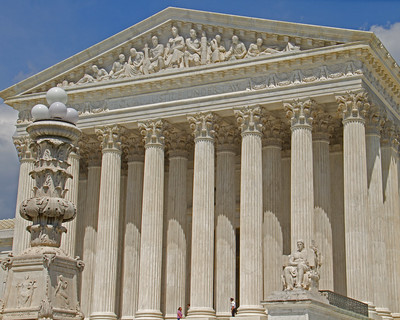In a widely anticipated decision, the US Supreme Court today issued a ruling that bars the consideration of an applicant’s race in higher education admission practices. In a 6-3 vote, the Court ruled that colleges must make race-blind admissions decisions. Education institutions had used Affirmative Action to achieve racial diversity on campus. The case, Students for Fair Admissions v. President and Fellows of Harvard College and the University of North Carolina, makes direct admission-style approaches at community colleges imperative.
In the US, most community colleges do not have competitive admissions. Virtually anyone who applies can enroll, but many students, especially racial minorities, students from low-income households, and students whose family history does not include post-secondary education, may not know that community colleges are open to everyone. Additionally, they may not know how to apply and enroll.
In the past, community colleges often relied on high school guidance counselors and teachers to direct graduating high school seniors to them. The COVID-19 pandemic and its disruption to the K-12 education system has left high school students less prepared to attend competitive colleges and universities. While many higher education institutions have dropped or paused standardized testing-based admissions requirements, it is not enough to help ensure diversity in admissions.
So, community colleges must reach out to all graduating high school seniors in their districts to inform them that they can enroll in college classes; complete a degree program; or transfer credits to a four-year institution. Using a direct admission model, community colleges can inform graduating seniors that they have already been accepted and can begin taking classes immediately.
Community colleges as pipelines for disadvantaged students
Currently, less than 60% of Michigan high school seniors complete the Free Application for Federal Student Aid (FAFSA), which is required to receive federal financial aid. Graduating seniors may not understand the process for accessing monies to pay for a college education.
Community college degree programs and transfer pathways to larger institutions may be the best path forward for racial minorities who wish to attend college. They may serve as fertile recruiting grounds for higher education institutions that would like to increase the number of minority students on campus.
Additionally, community colleges must shore up articulation agreements with colleges and universities to ensure that all students can transfer easily to the four-year institutions of their choice. They must minimize the number of non-transferrable credits by ensuring that all students have access to high quality academic advising. Finally, they must maintain close, positive relationships with four-year universities to create viable transfer opportunities for any student who wishes to earn a bachelor’s degree.
Losing Affirmative Action does not have to mean closing the doors of academia to disadvantaged students. As long as community colleges build and maintain a solid pipeline to the rest of the higher education system, disadvantaged students will still be able to achieve their post-secondary dreams.
Photo Credit: David, via Flickr








